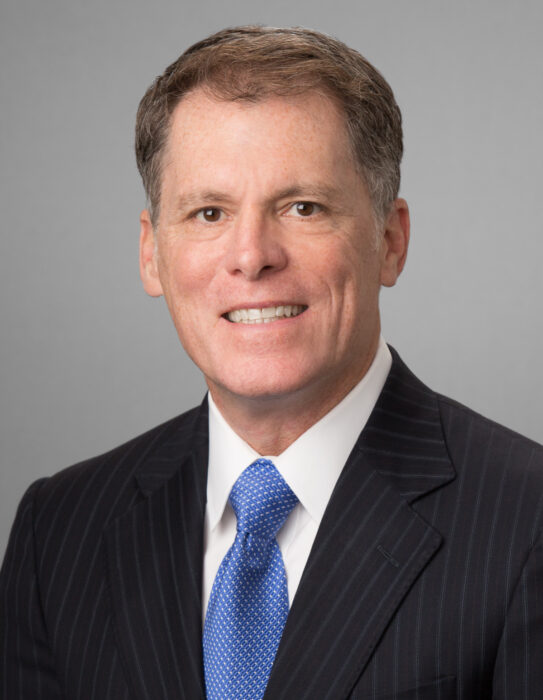Cost-benefit analysis of additional offshore bonding for Gulf of Mexico's outer continental shelf

The Opportune 2023 Study has been conducted to independently calculate the OCS plugging and abandonment (P&A) liability, assess the risk such liability poses to the U.S. taxpayer, and perform a cost-benefit analysis of how the Proposed Rule would economically affect the offshore oil and gas industry (the Industry), Gulf Coast and the United States. This study was performed by Opportune’s valuation, petroleum engineering1and financial reporting2 professionals through a series of interviews with Industry representatives, commercial banks, and surety brokers, and includes an analysis of independently obtained P&A cost data and market research.
The Opportune Study’s key findings include:
- The risk is strongly overstated: For the first time in Industry history, The Bureau of Safety and Environmental Enforcement (BSEE) recently announced a Draft for Proposal seeking bids to decommission 15 orphan wells located in the Matagorda Island, High Island, and West Delta areas of the OCS3. According to the Opportune 2023 Study, the related P&A liability of the orphan wells is ~0.8% (~$37.7 million) of the $4.5 billion in royalties and revenue the U.S. government (i.e., the taxpayer) received in 2021 alone from offshore Gulf of Mexico production.
- Additional Bonding Requirements will spur bankruptcies: Surety markets have recently threatened to exit the offshore sector, thereby drastically reducing available bonding capacity. The cost4 of the additional supplemental bonds and lack of capacity in the surety bond market will guarantee that small independent lessees will not be able to obtain the required supplemental bonding, becoming a catalyst to spur the bankruptcy risk of which regulations are intended to protect the U.S. taxpayer.
- Royalty revenues to the government will be drastically reduced: Additional bonding requirements will result in reduced offshore drilling and production, particularly in the shallow water of the OCS. The Opportune 2023 Study estimates that the resulting decrease in approximately 55 million boe5 of OCS production will reduce associated U.S. royalty revenues by approximately $0.5 billion.
- Constrained GDP will jeopardize communities, families, and jobs: Additional bonding requirements will also cause reduced revenues and operations for companies serving the OCS, resulting in a commensurate loss of jobs and community/tax revenues along the Gulf Coast, particularly Texas and Louisiana. The Opportune 2023 Study estimates that Additional Bonding Requirements will reduce U.S. Gross Domestic Product (particularly in the Gulf Coast states) by approximately $9.9 billion over a 10-year time horizon.
- There is a better way: Rather than implementing the Proposed Rule, BOEM should continue its increased communication with operators and focus on sole-liability properties. Continued collaboration will encourage OCS development and achieve BOEM’s goals without jeopardizing the Industry’s viability or increasing risk to the U.S. taxpayer.
The Opportune 2023 Study proposes three potential areas of improvement to the existing regulatory structure that would provide support to OCS lessees as well as protect taxpayers:
- Improved valuation processes
- Value P&A liabilities using the discounted Asset Retirement Obligation balance from lessees’ audited financial statements.
- Use forward strip pricing to determine the present value of lessees’ oil and gas reserves and add back their audited P&A liabilities to avoid a double jeopardy effect on lessees’ when assessing their financial strength and respective bonding requirements.
- Better accuracy in data gathering
- Require public and private operators to report the audited estimates of future P&A costs and dates, by property
- Require the audited amounts noted to be uploaded to a national BSEE database, similar to Federal reformulated blendstock reporting requirements for U.S. refineries.
- Replace and rethink financial assurance vehicles
- Replace supplemental bonding requirements with a cash reserve to be self-funded by OCS lessees through future production until such reserve is equal to the unbonded P&A liability associated with properties owned by small independents with no other co-owners or previous lessees in the chain of title (Sole-Liability Properties).
- Create a federal agency to issue unsecured bonds on Sole-Liability properties, allowing U.S. taxpayers to participate in the monetary float created by insuring future P&A liabilities.
These proposed solutions would support the health of OCS operators and ensure taxpayers are wholly protected.
1 Ralph E. Davis Associates is a wholly-owned subsidiary of Opportune LLP
2 Opportune LLP is not a CPA firm
3 “Orphaned Wells on the U.S. Outer Continental Shelf”, BSEE Virtual Industry Day Presentation; February 2, 2022.
4 Approximately 1-4% of the total surety bond’s face amount.
5 Barrels of Oil Equivalent
Related Insights
Our experts are here
for you.
When you choose Opportune, you gain access to seasoned professionals who not only listen to your needs, but who will work hand in hand with you to achieve established goals. With a sense of urgency and a can-do mindset, we focus on taking the steps necessary to create a higher impact and achieve maximum results for your organization.
LeadershipGeneral Contact Form
Looking for expertise in the energy industry? We’ve got you covered.
Find out why the new landmark legislation should provide a much-needed boost for the development of carbon capture.







